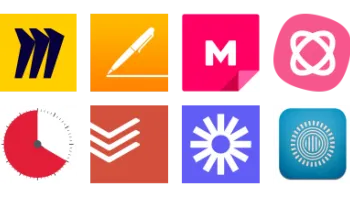Take a look inside 5 images
Markboard
Pros: Teachers can give meaningful feedback via comments, rubrics, or attachments.
Cons: No way to attach a previously created rubric.
Bottom Line: This standards-based assessment tool can ease the feedback process and potentially close the feedback loop with its companion planning tool.
Markboard is a Chalk product, so it integrates with Planboard (a lesson-planning tool), which is accessible from the same dashboard. From the dashboard, teachers can easily access Planboard, Markboard, and attendance, as well as help and standards. They can also make notes on a yellow sticky-note reminder. Within Markboard, teachers can access each of their classes and create and view assignments. For those assignments, teachers can attach standards, assign grades, and give student feedback. Assignments can be scored by numerical grades, checked by binary options, assessed by a rubric, or supplied with observed feedback. Students and parents can access the grading and feedback through their own unique accounts.
Markboard is a free assessment and feedback tool for teachers. After setting up classes and loading rosters, teachers create assignments, add learning standards, and apply an assessment procedure: scoring, binary, rubric, or observation. Teachers can leave feedback in the comments when returning work to students or attach documentation. Assignments are not automatically marked "late" or "not turned in" -- teachers must do that manually in the tool. Markboard's dashboard integrates with Planboard for teachers using that lesson-planning tool.
Markboard is easy to set up. For teachers able to fully use the gradebook, attendance function, and companion planning tool, it's a great resource. For schools using different platforms, teachers may not see as much time-saving benefit, since they'll still have to transfer grades from Markboard to their district's grading system.
The detailed grading options and the ability to leave comments or attach documentation make assessment more informative. Teachers can include rubrics with their assignments and assign specific learning standards to each assignment. Students will improve their work through this formative, detailed feedback, and parents will have fewer questions about grades.














